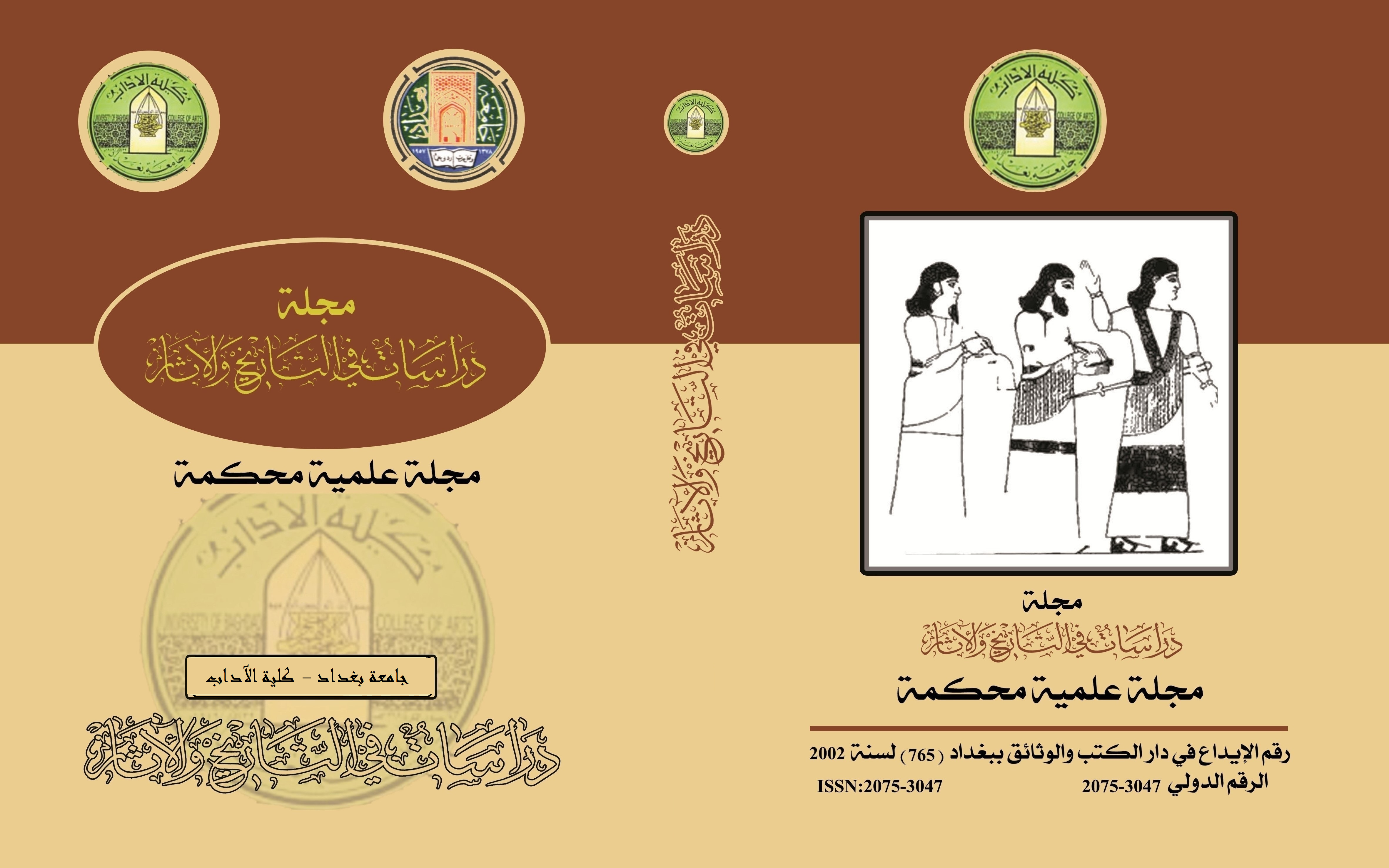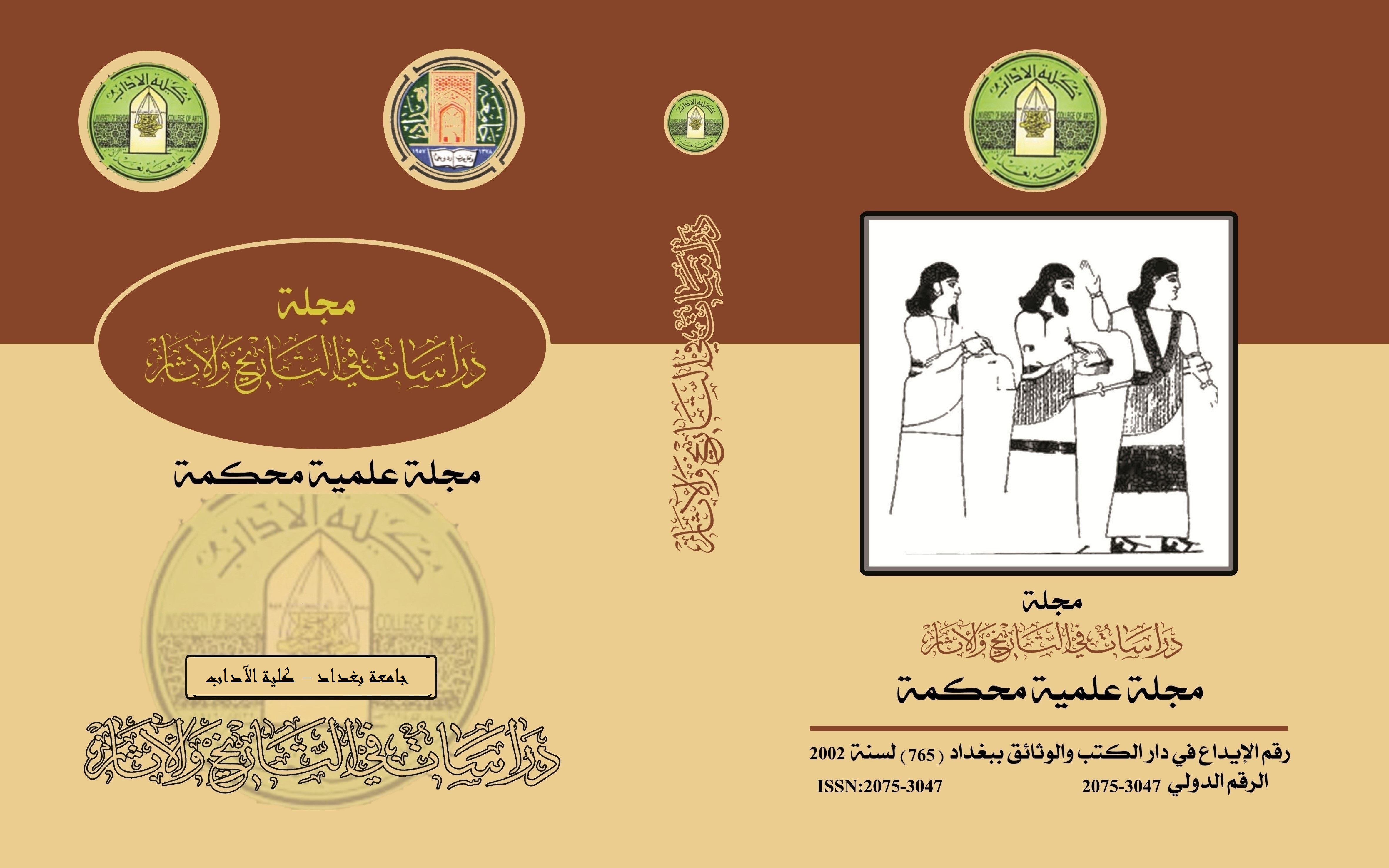المحاولات الصهيونية لعرقلة التسليح السعودي (صفقة طائرات اف 15 عام 1977-1978 انموذجا)
الكلمات المفتاحية:
السعودية، امريكا، طائرات اف 15، الكيان الصهيوني، النفطالملخص
اهداف الدراسة: تهدف الدراسة الى ايضاح دور اللوبي الصهيوني وجماعات الضغط الامريكية التابعة له في منع الادارة الامريكية والتأثير على قراراتها في منع تسليح أي من الدول العربية حتى الحليفة للولايات المتحدة الامريكية، وذلك لضمان التفوق العسكري الصهيوني في المنطقة وبحجة تمرير تلك الاسلحة الى جماعات المقاومة الفلسطينية.
المنهجية: تم استخدام المنهج التاريخي التحليلي لدراسة السجلات والوثائق الامريكية التي تناولت تلك القضية بشكل مفصل والخلافات التي شهدتها دوائر الادارة الامريكية بين مؤيد لارسال تلك الطائرات الى المملكة العربية السعودية وبين رافض لتلك الفكرة خشية على امان الكيان الصهيوني.
النتائج: استثمرت المملكة العربية السعودية فرصة هدوء الاوضاع بسبب استمرار مفاوضات السلام بين الكيان الصهيوني ومصر من جهة، فضلاً عن زيادة التدخل السوفيتي في القرن الافريقي بعد سقوط حكومة هيلاسي لاسي في اثيوبيا ومجيئ حكومة ذات توجهات شيوعية، ترافق ذلك مع ارتفاع اسعار النفط، ولم تستطع الادارة الامريكية تمرير صفقة الطائرات الا بعد ان ارسلتها بحزمة واحدة مع صفقة طائرات الى الكيان الصهيوني.
الخلاصة: اثبتت قضية الطائرات القوة الكبيرة التي يتمتع بها الكيان الصهيوني داخل الولايات المتحدة الامريكية من خلال اللوبي وجماعات الضغط الامريكية الموالية له، وهذا الامر ينعكس على سياسة الولايات المتحدة الامريكية الخارجية فتلك الجماعات تهدف بالدرجة الاساس الى حماية مصالح وامن الكيان الصهيوني حتى لو اضر ذلك بالسياسة والمصالح الامريكية في العالم، فضلاً عن ذلك ايقنا من خلال تلك الدراسة ان الاولوية في المصالح الامريكية في منطقة الشرق الاوسط هي اولا الكيان الصهيوني ثم ايران ثم الدول العربية الاخرى ولاسيما المملكة العربية السعودية الحليف الاساس لها، وذلك ايضا بسبب تاثير الكيان الصهيوني.
المراجع
( ) FOREIGN RELATIONS OF THE UNITED STATES, 1977–1980, VOLUME XVIII, Memorandum Prepared in the Central Intelligence Agency, 144, Washington, January 14, 1977, P. 462.
( ) Ibid, P 463.
( ) Ibid, P. 463.
( ) يقصد هنا بمصدر القلق الاحداث التي شهدتها بعض الدول العربية والتي كان احد اطرافها المقاتلون الفلسطينيون مثل احداث ايلول الاسود عام 1970 في الاردن، واحداث الحرب الاهلية اللبنانية والتي امدت من عام 1975 لغاية 1989.
( ) Ibid, P. 464.
( ) اعتمدت القوات الجوية السعودية في ذلك الوقت على الطائرات البريطانية القديمة لايتينغ (Lighting) من انتاج شركة انكلش الكتريك البريطانية والتي دخلت الخدمة عام 1954. للتفاصيل:
Anthony Axon، Susan Hewitt, Saudi Arabia 1975 – 2020, Brill Publishers, Netherlands, 2022, P. 524.
( ) FOREIGN RELATIONS OF THE UNITED STATES, 1977–1980, VOLUME XVIII, Telegram From the Embassy in Saudi Arabia to the Department of State and the Department of Defense, 145, Jidda, January 23, 1977, P. 470.
( ) Ibid
( ) Ibid, P. 471.
( ) FOREIGN RELATIONS OF THE UNITED STATES, 1977–1980, VOLUME XVIII, Telegram From the Department of State to the Embassy in Saudi Arabia, 146, Washington, February 8, 1977, P. 471.
( ) وهي مختصر (United States Military Training Mission) وهي بعثة امريكية لتدريب القوات السعودية تعمل منذ عام 1953. ينظر:
Michael J. Sippel, Saudi Arabia, The Changing Paradigm and Implications for The United States Military Training Mission, The DISAM Journal, Vol. 25, No (1, 2) Summer 2003, P. 4-5.
( ) FOREIGN RELATIONS OF THE UNITED STATES, 1977–1980, VOLUME XVIII, Telegram From the Embassy in Saudi Arabia to the Department of State, 147, Jidda, February 9, 1977, P. 472.
( ) FOREIGN RELATIONS OF THE UNITED STATES, 1977–1980, VOLUME XVIII, Telegram From the Embassy in Saudi Arabia to the Department of State, 148, Jidda, February 22, 1977, P. 483.
( ) FOREIGN RELATIONS OF THE UNITED STATES, 1977–1980, VOLUME XVIII, Memorandum From the President’s Assistant for National Security Affairs (Brzezinski) to President Carter, 149, Washington, May 21, 1977, P. 483.
( ) تتميز طائرات اف 15 كونها تحتوي على محركين نفاثين ولها قدرة في العمليات الدفاعية الاعتراضية والهجومية، اما طائرات اف 16 فكانت بمحرك واحد ورغم سرعة مناورتها الا ان اف 15 تتفوق عليها بالعديد من المزايا. للاطلاع على مزايا الطائرات ومواصفاتها ينظر:
Mark Dartford, Fighter Planes, Lerner Publications Company, Minneapolis, 2003.
( ) FOREIGN RELATIONS OF THE UNITED STATES, 1977–1980, VOLUME XVIII, Memorandum From the President’s Assistant for National Security Affairs (Brzezinski) to President Carter, 149, Washington, May 21, 1977, P. 483.
( ) Ibid.
( ) Ibid.
( ) Ibid.
( ) Ibid, P. 484.
( ) FOREIGN RELATIONS OF THE UNITED STATES, 1977–1980, VOLUME XVIII, Memorandum of Conversation, 151, Washington, May 24, 1977, P. 494.
( ) Ibid, P. 495.
( ) Ibid, P. 496.
( ) Ibid.
( ) Ibid, P. 497.
( ) Ibid, P. 498.
( ) FOREIGN RELATIONS OF THE UNITED STATES, 1977–1980, VOLUME XVIII, Telegram From the Department of State to the Embassy in Saudi Arabia, 152, Washington, June 18, 1977, P. 499-500.
( ) FOREIGN RELATIONS OF THE UNITED STATES, 1977–1980, VOLUME XVIII, Telegram From the Embassy in Saudi Arabia to the Department of State, 153, Jidda, June 26, 1977, P. 501.
( ) FOREIGN RELATIONS OF THE UNITED STATES, 1977–1980, VOLUME XVIII, Letter From Secretary of State Vance to Secretary of Defense Brown, 155, Washington, August 30, 1977, P. 517.
( ) FOREIGN RELATIONS OF THE UNITED STATES, 1977–1980, VOLUME XVIII, Memorandum From Jessica Tuchman of the National Security Council Staff to the President’s Assistant for National Security Affairs (Brzezinski), 156, Washington, September 29, 1977, P. 518-519.
( ) FOREIGN RELATIONS OF THE UNITED STATES, 1977–1980, VOLUME XVIII, Telegram From Secretary of the Treasury Blumenthal to the Department of State, 157, Dhahran, October 28, 1977, P. 519-520.
( ) Ibid, P. 520-521.
( ) FOREIGN RELATIONS OF THE UNITED STATES, 1977–1980, VOLUME XVIII, MIDDLE EAST REGION; Telegram From the Embassy in Saudi Arabia to the Department of State, 159, Jidda, December 1, 1977, 524.
( ) FOREIGN RELATIONS OF THE UNITED STATES, 1977–1980, VOLUME XVIII, Telegram From the Embassy in Saudi Arabia to the Department of State, 160, Jidda, December 7, 1977, P. 525.
التنزيلات
منشور
إصدار
القسم
الرخصة

هذا العمل مرخص بموجب Creative Commons Attribution 4.0 International License.
:حقوق الطبع والنشر والترخيص
بالنسبة لجميع البحوث المنشورة في مجلة دراسات في التاريخ والآثار، يحتفظ الباحثون بحقوق النشر. يتم ترخيص البحوث بموجب ترخيص Creative Commons CC BY 4.0 المفتوح ، مما يعني أنه يجوز لأي شخص تنزيل البحث وقراءته مجانًا. بالإضافة إلى ذلك ، يجوز إعادة استخدام البحث واقتباسه شريطة أن يتم الاستشهاد المصدر المنشور الأصلي. تتيح هذه الشروط الاستخدام الأقصى لعمل الباحث وعرضه.
:إعادة إنتاج البحوث المنشورة من الناشرين الآخرين
من الضروري للغاية أن يحصل الباحثون على إذن لإعادة إنتاج أي بحث منشورة (أشكال أو مخططات أو جداول أو أي مقتطفات من نص) لا يدخل في نطاق الملكية العامة أو لا يملكون حقوق نشرها. يجب أن يطلب الباحثون إذنًا من مؤلف حقوق النشر (عادة ما يكون الناشر).
يطلب الإذن في الحالات التالية:
بحوثك الخاصة المنشورة من قِبل ناشرين آخرين ولم تحتفظ بحقوق النشر الخاصة بها.
مقتطفات كبيرة من بحوث أي شخص أو سلسلة من البحوث المنشورة.
استخدم الجداول والرسوم البيانية والمخططات والمخططات والأعمال الفنية إذا لم يتم التعديل عليها.
الصور الفوتوغرافية التي لا تملك حقوق لنشرها.
لا يطلب الإذن في الحالات التالية:
إعادة بناء الجدول الخاص بك مع البيانات المنشورة بالفعل في مكان آخر. يرجى ملاحظة أنه في هذه الحالة يجب عليك ذكر مصدر البيانات في شكل "بيانات من ..." أو "مقتبس من ...".
تعتبر عروض الأسعار القصيرة معقولة الاستخدام العادل ، وبالتالي لا تتطلب إذنًا.
الرسوم البيانية ، الرسوم البيانية ، المخططات ، الأعمال الفنية التي أعاد الباحث رسمها بالكامل والتي تم تغييرها بشكل ملحوظ إلى درجة لا تتطلب الاعتراف.
الحصول على إذن
لتجنب التأخير غير الضروري في عملية النشر ، يجب أن تبدأ في الحصول على أذونات في أقرب وقت ممكن. لا يمكن لمجلة الآداب نشر بحث مقتبس من منشورات أخرى دون إذن.
قد يمنحك مالك حقوق الطبع والنشر تعليمات بشأن شكل الإقرار الواجب اتباعه لتوثيق عمله ؛ بخلاف ذلك ، اتبع النمط: "مستنسخ بإذن من [المؤلف] ، [كتاب / المجلة] ؛ نشره [الناشر] ، [السنة]." في نهاية شرح الجدول ، الشكل أو المخطط.



















